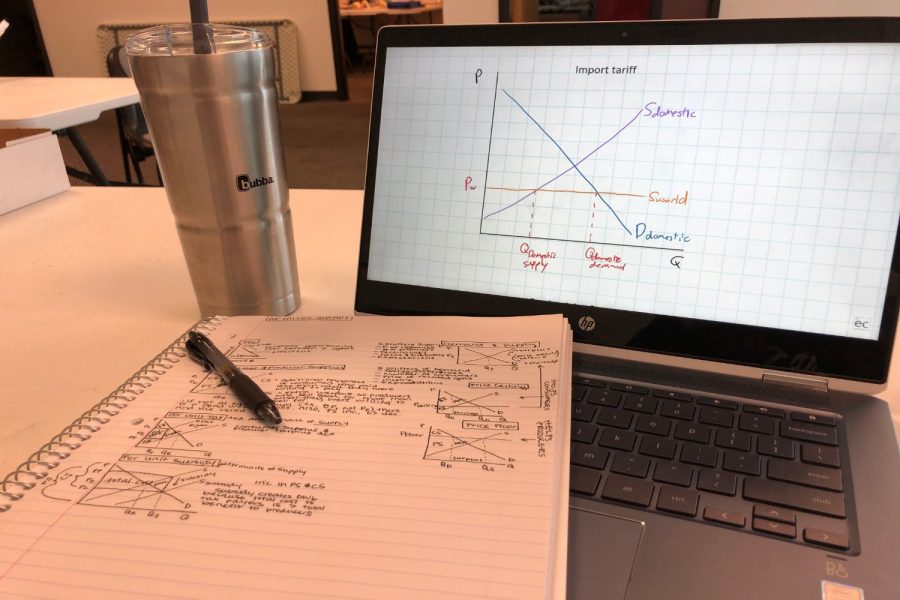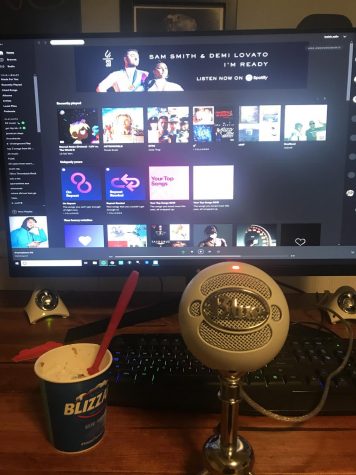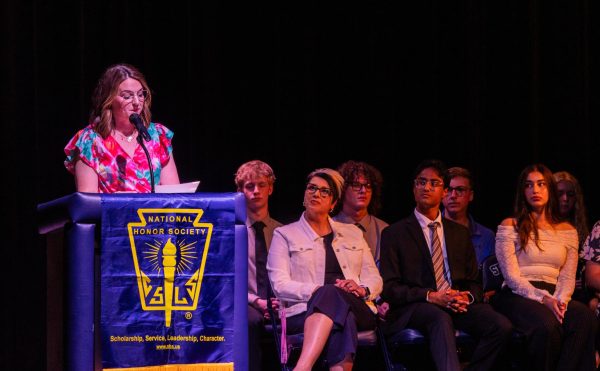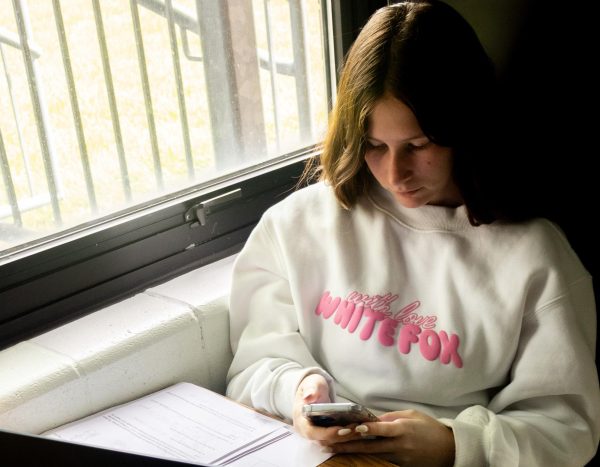The Bright Side to eLearning
Transitioning to online learning was rough in the beginning, but the benefits have seeped to the surface.
Online learning can be done in any setting at any time.
Students and teachers alike have had to make major adjustments to their classroom setting. Transitioning from seeing each other during class and in the halls to virtual zooms and email communication hasn’t been easy. Any transition takes time to adjust to. After seven weeks of online learning, faculty members have found instruction methods that work for their curriculum and students have found ways to best manage their time.
Online learning is nothing new to our society. Several high school and elementary school students take on online learning every day and even more college students take online courses. The benefits of online learning may be difficult to see during this time, but are still prevalent in our educational system.
Juniors Gillian Nicholson and Chris Hill see the ups and downs to online learning, both educational systems are valued in different ways. Nicholson enjoys the flexibility that online learning has to offer.
“A benefit would have to be picking the times that you get to do your work,” Nicholson said.
Taking on workouts from the varsity girls soccer team and juggling home life makes the flexibility of online learning worth its while for Nicholson. For Hill, the flexibility alongside a different approach to education provides a more suitable state of mental health.
“A positive thing for online learning is there aren’t really any tests going on and it can be more stress relief,” Hill said.
Although some may miss the traditional school setting, there are some things Nicholson doesn’t miss. With every class meeting each day, it provides students with more homework each night.
“The downside to in-class learning would be that we get way more homework to do and school takes more time than online learning,” Nicholson said.
As far as time goes, there are more hours in the in-class environment and fewer hours through eLearning. This provides students with more time to get healthy, interact with family and friends (while social distancing, of course) and pick up new hobbies.
Hill finds school to be stressful and values the change in environment.
“A negative thing for in-school learning is you have to take lots of unit tests and quizzes on the side which can be stressful,” Hill said.
For most classes, tests and quizzes have been little to none in quantity. Some students and faculty feel that this may reduce the amount of education students are receiving, yet students are required to complete one assignment’s worth of work or receive a zero in the grade book.
Fortunately, this one assignment can be completed over the course of four to five days, thus reducing the stress of deadlines and due dates and making time more manageable.
Although this eLearning probably won’t stay once we come around to the conclusion of the coronavirus pandemic, we may begin to incorporate more of online education into courses to adjust students to the technology they will face on a daily basis in the future.
Your donation will support the student journalists of Francis Howell Central High School. Your contribution will allow us to purchase equipment and cover our annual website hosting costs. FHCToday.com and our subsequent publications are dedicated to the students by the students. We hope you consider donating to allow us to continue our mission of a connected and well-informed student body.













